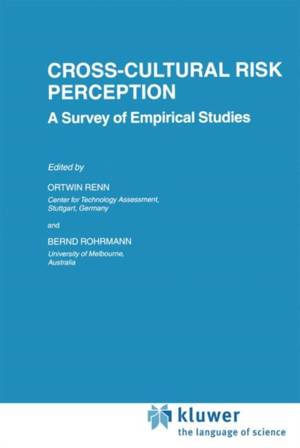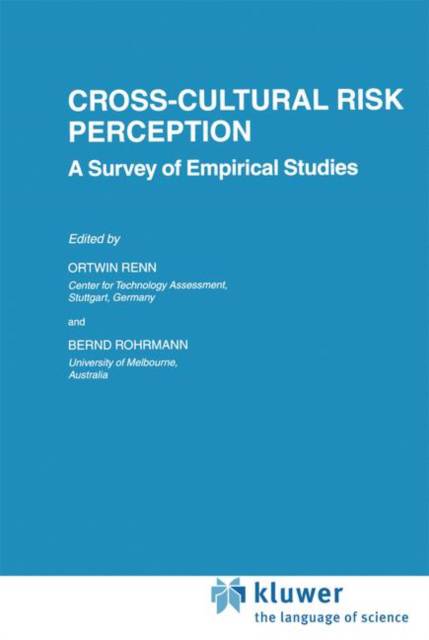
- Afhalen na 1 uur in een winkel met voorraad
- Gratis thuislevering in België vanaf € 30
- Ruim aanbod met 7 miljoen producten
- Afhalen na 1 uur in een winkel met voorraad
- Gratis thuislevering in België vanaf € 30
- Ruim aanbod met 7 miljoen producten
Zoeken
Cross-Cultural Risk Perception
A Survey of Empirical Studies
€ 195,95
+ 391 punten
Omschrijving
Cross-Cultural Risk Perception demonstrates the richness and wealth of theoretical insights and practical information that risk perception studies can offer to policy makers, risk experts, and interested parties. The book begins with an extended introduction summarizing the state of the art in risk perception research and core issues of cross-cultural comparisons. The main body of the book consists of four cross-cultural studies on public attitudes towards risk in different countries, including the United States, Australia, New Zealand, France, Germany, Sweden, Bulgaria, Romania, Japan, and China. The last chapter critically discusses the main findings from these studies and proposes a framework for understanding and investigating cross-cultural risk perception. Finally, implications for communication, regulation and management are outlined.
The two editors, sociologist Ortwin Renn (Center of Technology Assessment, Germany) and psychologist Bernd Rohrmann (University of Melbourne, Australia), have been engaged in risk research for the last three decades. They both have written extensively on this subject and provided new empirical and theoretical insights into the growing body of international risk perception research.
The two editors, sociologist Ortwin Renn (Center of Technology Assessment, Germany) and psychologist Bernd Rohrmann (University of Melbourne, Australia), have been engaged in risk research for the last three decades. They both have written extensively on this subject and provided new empirical and theoretical insights into the growing body of international risk perception research.
Specificaties
Betrokkenen
- Uitgeverij:
Inhoud
- Aantal bladzijden:
- 242
- Taal:
- Engels
- Reeks:
- Reeksnummer:
- nr. 13
Eigenschappen
- Productcode (EAN):
- 9780792377474
- Verschijningsdatum:
- 31/01/2000
- Uitvoering:
- Hardcover
- Formaat:
- Genaaid
- Afmetingen:
- 165 mm x 248 mm
- Gewicht:
- 503 g

Alleen bij Standaard Boekhandel
+ 391 punten op je klantenkaart van Standaard Boekhandel
Beoordelingen
We publiceren alleen reviews die voldoen aan de voorwaarden voor reviews. Bekijk onze voorwaarden voor reviews.










